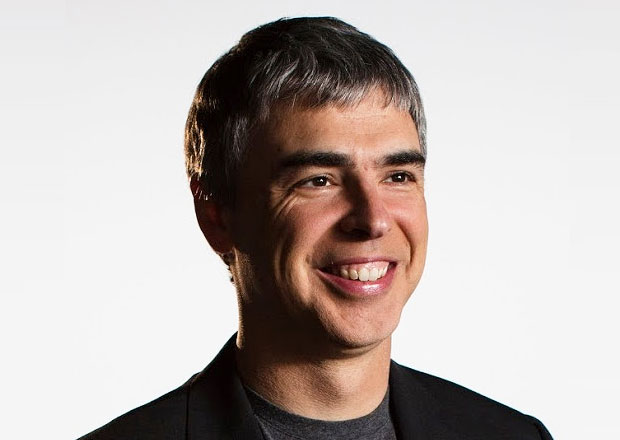Google cofounder Larry Page is working with two Silicon Valley startups to develop a flying car, Bloomberg Businessweek reported Thursday. One is Zee.Aero, which Page personally has funded since its launch in 2010, when it set up shop next to Google’s headquarters in Mountain View, California. The firm reportedly has filed a patent application for a small, all-electric vehicle that could take off and land vertically.
Page has invested more than US$100 million in Zee.Aero, according to the Bloomberg story. The company has nearly 150 employees and has expanded its operations to include an airport hangar in Hollister, California, where prototypes now are being tested. It also has a manufacturing facility at NASA’s Ames Research Center in Mountain View.
However, Zee.Aero is just part of the story. Page last year personally backed the flying-car startup Kitty Hawk, which began operations just down the street from Zee.Aero, according to reports. The two companies are not collaborating on efforts to develop a flying car, but rather are working on competing designs.
At Kitty Hawk’s helm is Sebastian Thrun, head of Google’s self-driving car program and founder of Google X, the research division of Google, according to 2015 business filings.
Beyond Science Fiction
The idea of a flying car has existed in science fiction for decades. The concept also caught the imagination of automotive visionaries, including Henry Ford, who predicted a combined automobile and aircraft as far back as 1940. Independent developers have spent decades trying to develop a flying car but with nothing close to commercial success.
“Flying cars have always been the futurists’ nemesis,” said futurist Michael Rogers.
“Popular Mechanics predicted in 1957 we would have them by 1967,” he told TechNewsWorld.
Decades later, that fantasy finally could become a reality.
“We live in an era of science fiction,” said Kevin Krewell, principal analyst at Tirias Research.
“We have universal translators, private rockets to space, cars that can drive themselves, drones,” he told TechNewsWorld. “We’re just missing that darn flying car we were promised — but I’d prefer a jet pack over a flying car.”
Is the Sky the Limit?
Page’s investment in not one but two companies clearly demonstrates that this isn’t just a vanity project. It appears to be a real effort to develop an actual consumer product.
Both Page and Google cofounder Sergey Brin have an interest in flight, which is why they cut a deal with NASA to host their private jets at the nearby Moffett Federal Airfield, noted Krewell.
“Page would like to extend the ability to fly beyond traditional airfields to streets or parking lots,” he said.
A flying car could solve one of the region’s biggest headaches.
“The traffic in the Bay Area has gotten really bad in recent years with the explosive growth of local companies like Google, Facebook, LinkedIn and Apple, and I fully understand his wish to rise up above the crowded freeways,” Krewell added.
Simply flying over traffic may not be the answer however.”The automobile was, of course, a horseless carriage,” observed futurist Rogers.
“It was a big change, but really a change in degree, not kind — and you could use the same roads,” he pointed out. “The flying car, on the other hand, will require new infrastructure. Even if it is vertical takeoff and landing, that’s going to mean new landing pads everywhere.”
Self-Flying Cars
One key distinction of the latest flying car initiatives is that the passengers likely won’t be doing the flying. Flying cars likely will take advantage of the autonomous vehicle technologies Google and others are developing.
“Simple questions: Do you want a human-piloted flying car anywhere near your house? Your office building? The mall you like to shop at?” pondered Paul Teich, principal analyst at Tirias Research.
“People have enough difficulty driving on fixed road infrastructure in 2.5 dimensions — counting landscape topography as half of a dimension — so that is why we need insurance, and far too often police, fire and EMS response teams,” he told TechNewsWorld.
“Technically, a car and an airplane are fundamentally different devices — one moves basically in 2D space, the other in 3D space,” added Rogers.
Training to be a pilot is far more complicated learning to drive a car, and pilot certification entails “a highly regulated set of courses and tests, designed for different classes of aircraft,” noted Tirias’ Teich.
Autonomous piloting is the only way to ensure that flying cars do not wreak havoc on lives and infrastructure, he suggested.
“Then we need to consider whether the FAA is capable of controlling flying car traffic on top of its current load of commercial and private aircraft traffic,” Teich added.
“Transportation devices for the general public involve all kinds of legal and regulatory boundaries,” Rogers acknowledged. Still, “incremental changes in transportation issues may require some rewriting of the rules — but not a full-scale rethinking.






















































